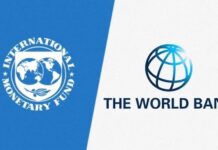Remittances act as a crucial safety net for many Somalis, but there are significant variations in the amounts and frequency of transfers and who receives them. Surveys indicate that a majority of Somali households do not benefit directly from remittances.
Variations are marked in the locations where remittances are more commonly found, between urban and rural households and geographically. Northern areas appear to receive more on average than those in the south.
Remittances are an important factor in determining the resilience of different communities, and relative levels of inequality in Somalia. The uneven impact of remittances made some communities more vulnerable to famine in 2011.
Access to credit is enhanced by remittances. They increase the purchasing power of households and diversify the nutritional intake of families. Aid agencies and donors engaged in food and cash-based assistance programmes in Somalia need a clearer understanding of the influence of remittances on household resilience, and how to build on their positive impact.
Introduction
The importance of remittances to the household economy across Somalia is well-recognized. What is less well understood is the relationship between remittances and the relative vulnerability of certain communities, particularly to drought and food insecurity. This briefing outlines the key features and the marked variations of the remittance landscape in Somalia. It also analyses how remittances are used by families to improve food security, particularly through access to credit.




